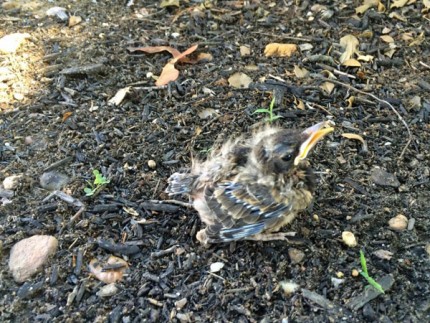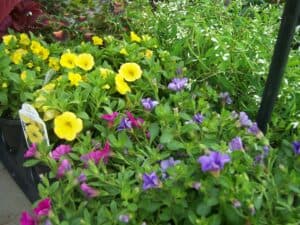
(Chelsea Update would like to thank Jennifer Fairfield, owner of the Garden Mill for the information in this column. This is the second part of a 2-part column. Part 1 of this column ran yesterday.)
In the flower garden:
In your flower gardens, give your plants a little fertilizer boost now, too. They’re busy putting on a good show for you, and that takes a lot of energy, so help them out with some added nutrition.
Fertilize flowers in containers weekly, and don’t forget about watering them if they are placed where they aren’t getting the rain.
Deadheading is also key to keeping a lot of your plants flowering. If you let the spent flowers go to seed, many plants will stop producing flowers and work on maturing the seeds. While that may help the plant produce offspring, it doesn’t help you if your goal is more flowers this year.
Deadheading is important for most annuals and perennials.
Make note of plants that are looking leggy or are showing signs of thinning at the center. This is an indication that you need to do some dividing. Dividing should be done when the plants are not in bloom, so wait until after they have finished blooming, but be sure to divide and replant before it gets too cold for the plant to recuperate.
If your taller plants, such as lilies, glads, and dahlias are flopping over, they may need support. There are a number of options, but these days I’m in love with the Y-stakes we have at the store. They come in a variety of heights and are super-flexible so that they can be bent to almost any shape to help keep plants upright.

I’ve got some perennial salvia that is getting a little overgrown (definitely a candidate for dividing this fall), but the Y-stakes came to the rescue. One of the best things about them is that they disappear in the foliage so they aren’t even noticeable (if you look closely at this picture, you might see them), and don’t distract from the beauty of the plants.
Just because we are getting a lot of rain, doesn’t mean we can forget about watering the rest of the summer. It would be nice if it worked that way, but it doesn’t. So, keep an eye on rainfall amounts, and be prepared to water if we are getting less than an inch of rain each week.
And don’t rely on the weather forecasters for rainfall totals. Your yard may not be getting the same rain as the location they report. A rain gauge in your yard is the only way to be sure of the amount of precipitation your gardens are getting.
Lawn:
With all the rain, it’s been hard to keep up with mowing. Remember to only take off the top third of the grass blades each time you mow. Mowing off more than that causes the grass to put more energy into growing leaf than into growing roots, which stresses the roots, and therefore the entire plant. It’s better to mow more frequently than to cut off too much all at once. That’s easier said than done when it rains constantly, though.
Try not to walk on the lawn too much or use heavy equipment when it’s really wet. Doing so can compact the soil, especially if you have heavy clay soil as most of us in SE Michigan do. Compacted soil makes it hard for the roots of your grass to get the air they need, which can kill the grass (or any plant).
Also remember to keep your grass cut to no lower than 3 inches. This helps to suppress weeds in the grass, and helps provide shade to the roots during the hot sunny days we know are coming.
For the birds:
Lots of birds are busy with their second broods now. I have a bluebird momma who is currently not happy with me because I’ve been doing a lot of yard work a little too close to the house where her babies are.
I keep apologizing to her, but she seems unimpressed. She does still manage to bring them food on a regular basis though, so I’m not too worried. I also just realized that I have a bird I have not yet identified tending a nest in a dwarf juniper near my front door. It’s a great shrub to have a nest in because the needles are so dense that it’s almost impossible to see the nest. It took me a bit to find it, and I knew it had to be there – I didn’t figure she was going in and out just for fun. Luckily, we don’t use the front door much, so when they hatch, we won’t be disturbing them frequently.
Keep any eye out for baby birds in your yard as they start to fledge. For the most part, there is nothing you need to do for them, except not hurt them as you go about your chores, like mowing. My brother and sister-in-law sent me the picture of a baby robin they had found in their yard in New Jersey right after the wicked storms went through early last week.
Keep your feeders cleaned out and filled.
Ditto for your birdbaths.



















